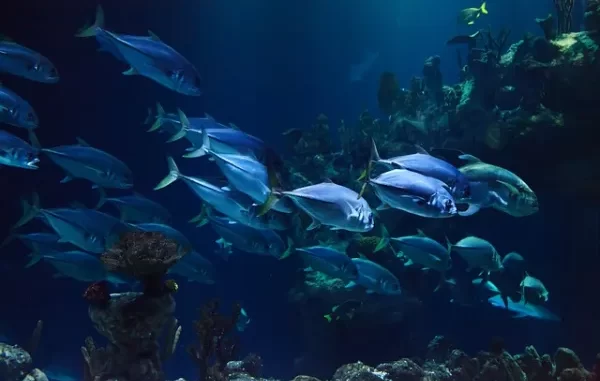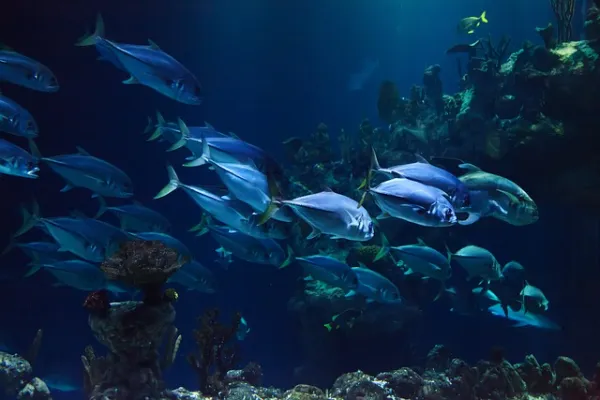
Fish are some of the most interesting creatures in the animal kingdom. From the massive whale shark to the tiny goby, fish come in all shapes and sizes and have unique adaptations that help them survive in their environment. While most people think of fish as simple animals, there are many fascinating facts about fish that are worth exploring. From their incredible senses to their diverse diets, there is so much to learn about fish that you may not have known before. Whether you’re a fish enthusiast or just curious about these creatures, here are some interesting facts about fish that you should know.
Unbelievable Adaptations of Fish: How They Survive
Fish are some of the most adaptable creatures on Earth, able to survive in an astonishingly wide variety of conditions. They have developed a number of remarkable adaptations that enable them to live in almost any aquatic environment. From deep oceans to shallow streams, fish have evolved complex physiological and behavioral adaptations to ensure their survival.
One of the most important adaptations of fish is their ability to respire underwater. Fish extract oxygen from the water using specialized organs called gills. Gills are highly efficient and allow fish to extract oxygen from water at a much higher rate than humans can extract oxygen from air. In addition, fish can also use their swim bladder as an auxiliary organ for respiration. This organ is filled with air and helps fish conserve energy by allowing them to maintain their buoyancy.
Another remarkable adaptation of fish is their ability to live in a wide variety of temperatures and salinities. Many species have evolved antifreeze proteins in their blood that allow them to survive in cold waters, while other species have evolved ways to cope with extreme salinities. For example, some species such as the euryhaline species of killifish can survive in waters with salinities ranging from freshwater to ocean water.
Fish also possess a number of behavioral adaptations that enable them to survive in different environments. These include migration, schooling, and the ability to hide in camouflage. Migration helps fish move between different habitats with different temperatures and salinities, while schooling allows them to protect themselves from predators. Camouflage helps fish hide from predators by blending in with their environment.
The adaptations of fish have been essential for their survival and success in the aquatic environment. They have enabled them to colonize virtually every aquatic environment on the planet, from the depths of the ocean to the shallowest streams. This remarkable ability to survive and thrive in an ever-changing environment is a testament to the adaptability of fish.
5 Interesting Facts About Fish Behavior
- Fish exhibit complex social behavior. Fish are known to form large schools and display complex social behaviors, such as establishing dominance hierarchies or exhibiting cooperative hunting behaviors.
- Fish express emotions. It is believed that fish can express emotions, including fear, anger, and even joy. For example, some fish are known to display aggression when defending their territories.
- Fish have complex communication systems. Fish possess a range of communication methods, including sound, body language, and visual displays.
- Fish can recognize individual humans. It is believed that some species of fish can recognize individual humans and respond to them differently than they do to other humans.
- Fish can learn and remember. Studies have shown that fish are capable of learning, remembering, and even solving problems. Some species even appear to be able to recognize patterns and use them to their advantage.
Dazzling Displays of Color: The Amazing Variety of Fish
Fish are one of the most diverse groups of animals on this planet. They come in a dazzling array of colors, shapes, and sizes. While some fish have colors that help them blend into their environment, others have vibrant hues and patterns that make them stand out.
No matter what type of fish you are looking at, you can be sure that they come in a variety of colors that can range from subtle to intense. From the deep blues and greens of the ocean to the bright oranges and yellows of tropical species, there is something for everyone.
Many of the colors that you see in fish are the result of their diet. Fish that feed on plankton and other small organisms may be colored to help them blend in with their surroundings. On the other hand, larger fish that feed on larger prey may have brighter colors in order to make them more visible.

The colors of some fish can also be used as a warning sign. Certain species of fish can change colors when they are feeling threatened or when they are courting. For example, the clownfish can go from a bright orange to a deep red when it senses danger.
The shapes and sizes of fish can also be quite varied. Some fish, such as the angelfish, are long and slender while others, such as the pufferfish, are round and plump. The sizes of fish can also vary greatly, from the tiny pygmy goby to the giant whale shark.
Whatever type of fish you are looking at, you can be sure that it will be full of color and character. Whether you are looking for a unique pet or just admiring the beauty of the ocean, you are sure to be amazed at the variety of fish that exist in the world.
Unfathomable Depths: What We Know About Deep Sea Fish
Deep sea fish live in the deepest parts of the ocean, away from sunlight and in extreme pressure. Although scientists have made remarkable progress in understanding these creatures, much remains unknown.
Deep sea fish inhabit the mesopelagic zone, which is the layer of the ocean between 200 and 1,000 meters deep. This zone is the largest habitat on Earth, covering more than 40 percent of the planet’s surface. It is home to thousands of species, most of which are still unidentified.
Deep sea fish have adapted to live in an environment of low light, high pressure, and extreme cold. They have large eyes that help them to see in the dark and bioluminescent organs that produce light in the form of flashes. They also have special sensory organs that allow them to detect pressure changes and navigate in the dark.
Deep sea fish have a highly specialized diet. Many species feed on plankton, while others scavenge for food on the ocean floor. Some fish also have sharp teeth and powerful jaws to help them capture prey.
Deep sea fish live in a wide variety of habitats, from abyssal plains to hydrothermal vents. The ocean floor is teeming with life, and can be a dangerous place for these creatures. Many deep sea fish have evolved spines and venomous barbs to defend themselves from predators.
The physiology of deep sea fish is still largely a mystery. Scientists are intrigued by their unique adaptations and are studying how they survive in such an extreme environment. While much is still unknown about these creatures, research is ongoing and scientists are slowly uncovering the secrets of the deep sea.
Fish are incredible creatures! They come in a wide variety of shapes and sizes, and can live in almost every environment imaginable. They have evolved to survive in some of the harshest conditions on the planet, and have even adapted to live in the coldest of waters. They can hide in the smallest of spaces and can even change their color to blend in with their surroundings. Fish are truly fascinating creatures and are worth learning more about.
Leave a Reply